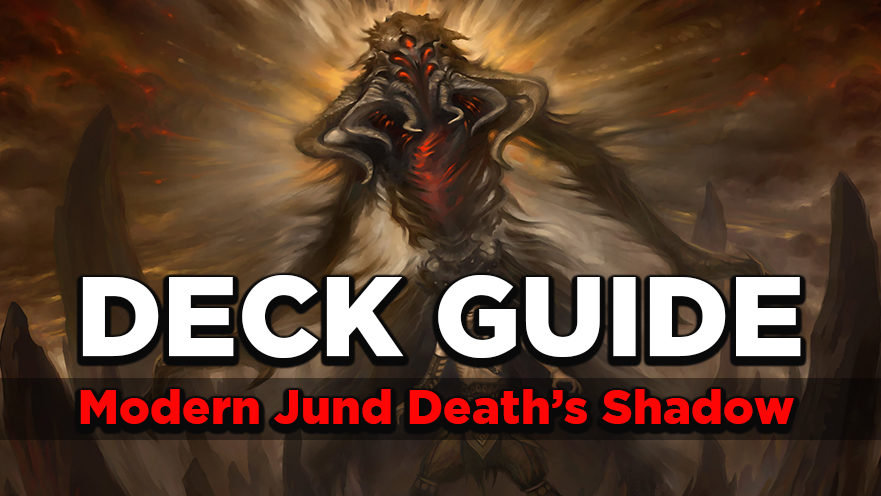Many of you may know me from my previous work on both Grixis and Mardu Death’s Shadow. Having already written about both of those decks, I figured it was time to break down the latest Death’s Shadow archetype: Jund Shadow. Traverse Shadow was a deck you might remember Josh Utter-Leyton championing during the infancy of Death’s Shadow development. Matt Nass recently picked it up again for a Grand Prix.
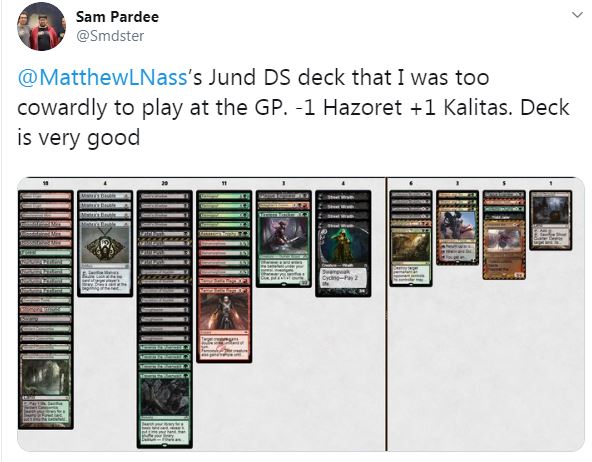
When I saw this, I stared at the list for a solid 30 minutes, wondering why Matt Nass, of all people, would pick up Jund Shadow right now. It’s such a departure from his normal style that the only conclusion I could come to was that he believed it exploited a hole in the metagame.
I was busy testing Legacy for SCG Syracuse at the time, so I couldn’t put much time into the deck. Luckily, Emma Handy picked up where Matt left off and started playing the deck in PTQ’s. The list I played recently is heavily influenced by their decks, and it performed reasonably well. I won around 75% of my matches on Magic Online, so the deck seemed good enough to discuss.
Here’s the list I played:
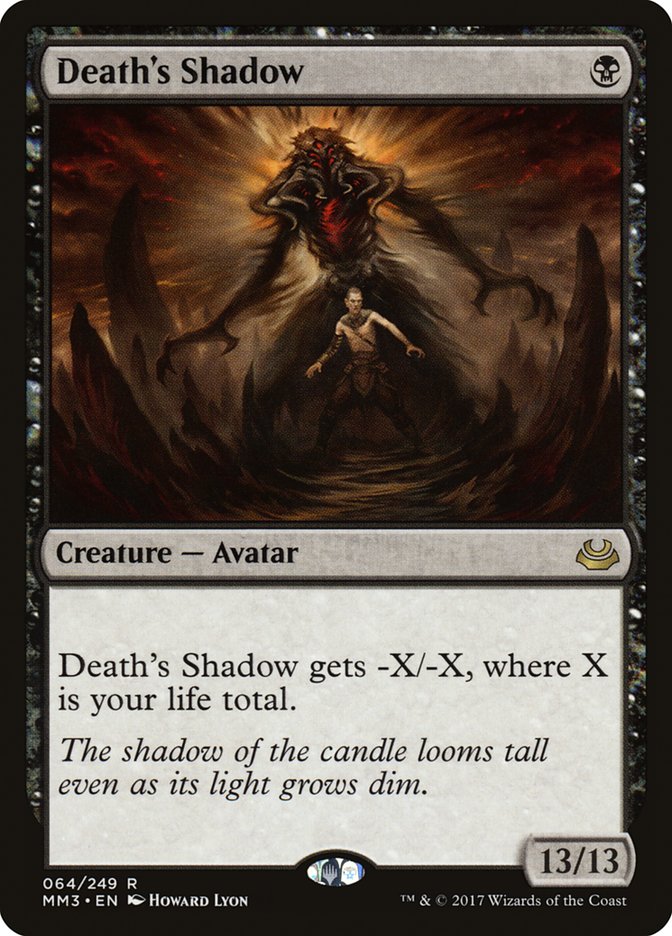
2 Blood Crypt
4 Bloodstained Mire
1 Forest
4 Nurturing Peatland
1 Overgrown Tomb
1 Stomping Ground
1 Swamp
4 Verdant Catacombs
4 Mishra’s Bauble
4 Death’s Shadow
4 Fatal Push
4 Inquisition of Kozilek
4 Thoughtseize
4 Traverse the Ulvenwald
1 Tarfire
2 Temur Battle Rage
4 Tarmogoyf
1 Assassin’s Trophy
4 Manamorphose
1 Plague Engineer
1 Kolaghan’s Command
4 Street Wraith
Sideboard:
4 Collective Brutality
1 Collector Ouphe
3 Wrenn and Six
1 Plague Engineer
1 Tireless Tracker
1 Ghost Quarter
1 Tin Street Hooligan
1 Kolaghan’s Command
1 Hazoret the Fervent
1 Assassin’s Trophy
My only change was to add Tarfire to replace Matt’s Tireless Tracker or Emma’s Hexdrinker. I found that getting an instant into the graveyard was important in games where Fatal Push isn’t great, so the move to Tarfire just increased the consistency to enable Delirium.
“So, What Does The Deck Do, Anyway?”
Jund Shadow is an aggressive, efficient midrange deck. This low-to-the-ground shell isn’t one we see in other Shadow variants: Grixis is a tempo deck, while Mardu is more of a traditional midrange deck. Jund tries to occupy the space between them, offering a brutally low mana curve backed by cheap, powerful threats like Death’s Shadow and Tarmogoyf.
The Jund Shadow game plan is pretty simple: utilize your cheap, disruptive cards like Thoughtseize, Inquisition of Kozilek, and Fatal Push to keep your opponent off balance long enough for your under-costed threats to finish them off. Like traditional midrange decks, Jund Shadow has game against nearly everything, giving the deck flatter matchup percentages.
Core Cards

Thoughtseize and Inquisition of Kozilek are the backbone of the disruption suite. One of the hardest skills to master in Magic is playing around what your opponent might have. These eight discard spells help remove some of the guesswork. Maneuvering around your opponent’s cards isn’t always easy, even when you know what they are, but these cards allow you to poke holes in their plan while developing yours.

Tarmogoyf and Death’s Shadow can both be enormous creatures for their mana investment and are perfect to back up all the disruption that Jund Shadow brings. Casting Thoughtseize early in the game is great, but you need to keep the pressure on to back it up before your opponent can recover. Death’s Shadow is frequently on attacking duty as a result of the race that Jund Shadow often gets in to enable one mana behemoths. Tarmogoyf is excellent at applying pressure, and holding down the fort on defense – a true team player.
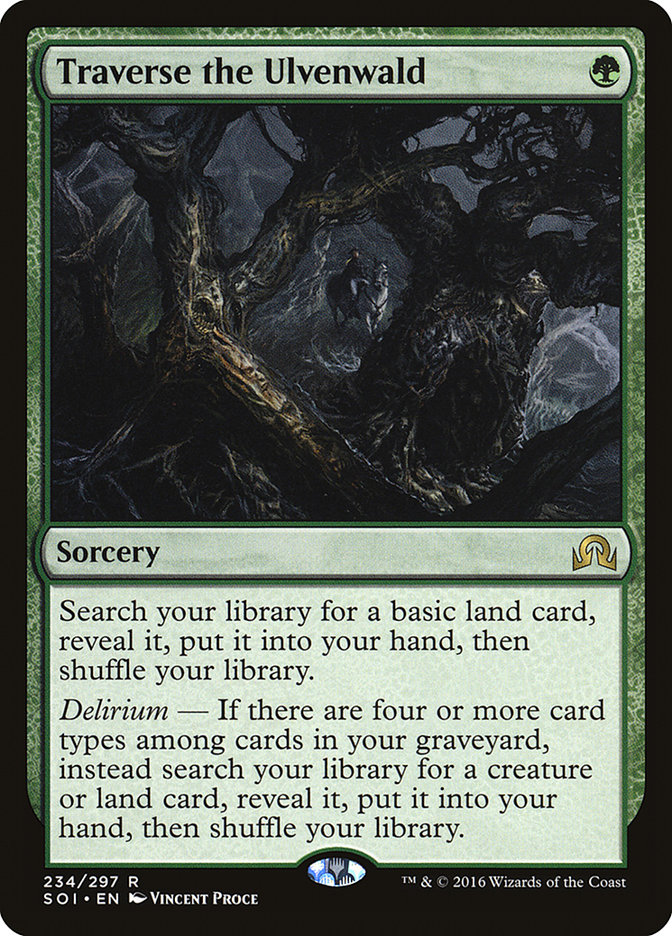
Traverse the Ulvenwald is perhaps the biggest draw to play the Jund version of this deck. When you can consistently enable Delirium, a one-mana tutor that finds a creature or land goes a long way to fixing the chief weakness of Shadow decks: the inability to consistently find your threats. Traverse provides ancillary utility by finding both Street Wraith and fetchlands (for growing your Death’s Shadows), or as a redraw if you’re looking to hit a specific answer.

Without blue card-draw spells, Jund Shadow needs to find a way to churn through the deck and find the cards it needs. Mishra’s Bauble and Street Wraith both help. These cantrips don’t just provide card-draw opportunities – they also cost zero mana! Bauble and Wraith also pull double duty as enablers in this shell, helping provide Delirium plus life loss to turn on early Death’s Shadows.
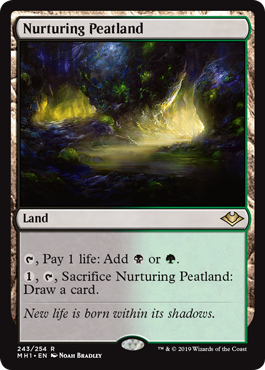
Nurturing Peatland is as integral to Jund Shadow as Silent Clearing is to Mardu. It provides a consistent source of self-damage for growing Death’s Shadow, as well as potential card-draw.
Shadow Strengths
So, what is Jund Shadow good at?
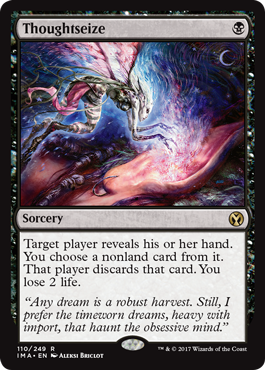
Of the Death’s Shadow decks, Jund can play a turn-one discard spell and a turn-two threat most consistently. Remember when I talked about backing early disruption with pressure? A full eight discard spells and access to Tarmogoyf gives Jund Shadow an edge when it comes to executing the main game plan.
Jund Shadow excels at punishing decks that stumble in the early turns. This isn’t always common in Modern, but decks with eight discard spells can induce stumbling. Using Thoughtseize to strip your opponent’s two-drop going into turn two is an excellent way to gain tempo advantage, especially if you can deploy a threat.
Traverse the Ulvenwald is also the most consistent way to find threats, especially backup threats. The deck sometimes has to jump through hoops to enable Delirium, but four card types will usually end up in the graveyard incidentally.
Finally, Jund Shadow is the most consistent Shadow deck at finding “silver bullet” creatures from the sideboard. Powerful sideboard cards are a must in Modern, so being able to tutor up Collector Ouphe and Plague Engineer is another big point for Jund Shadow.
Jund Shadow has plenty of good matchups, as several decks are weak to Tarmogoyf and/or Thoughtseize. Specifically, combo decks like Ad Nauseam and Devoted Druid, or creature-based decks like Infect and Eldrazi Tron, are favorable match-ups.
Shadow Weaknesses
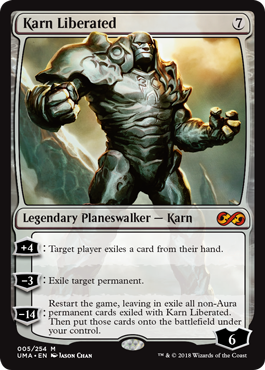
It would be disingenuous to present Jund Shadow’s strengths without also discussing its weaknesses. Jund Shadow’s best answer to opposing threats is Fatal Push, which is ineffective against threats as diverse as Lava Spike and Karn Liberated. These weaknesses stem from the absence of stack-based interaction that you’ll find in Grixis Shadow. Jund Shadow maxes out on Thoughtseize and Inquisition of Kozilek, and while these cards are powerful in the first few turns of the game, their effectiveness falls off quickly.
Traverse the Ulvenwald is extremely powerful when it functions as Demonic Tutor, but when Delirium isn’t active, it’s much closer to Lay of the Land, a much less flexible option. The volatility of Traverse forces the deck to play cards like Manamorphose and Mishra’s Bauble just to enable Delirium.
Jund Shadow can have difficulty dealing with decks like Tron, which have a high density of nearly unbeatable haymakers. Discard spells early in the game can force Tron to stumble, but since Jund Shadow has few ways to interact with their lands, Tron is free to draw huge threat after huge threat knowing they will resolve. This forces the Shadow player to try to win the game quickly, but given the number of ineffective cards Shadow has for game one, this isn’t always easy.
Burn is also a difficult match-up unless the Shadow player can cast Inquisition of Kozilek into Tarmogoyf. All of Burn’s cards do roughly 2-4 damage, and Shadow’s full of cards designed to damage itself, so this dynamic creates quite the squeeze. Death’s Shadow is less effective in this match-up, as it’s risky to hover at a life total where it will be an effective threat.
Lastly, we have interactive decks with value engines such as Azorius Control and Jund. The biggest reason that Jund Shadow struggles against these decks is that playing the waiting game results in getting buried by Jace, the Mind Sculptor and Liliana of the Veil. When trying to play these match-ups aggressively, Fatal Push and Path to Exile are better at picking off your threats. Careful timing and navigating discard spells can force Azorius Control and Jund to stumble long enough for you to get a Death’s Shadow into play and gain the upper hand.
Throne of Eldraine Updates
Who doesn’t love new cards and new deck lists?! Luckily, Throne of Eldraine has a few new toys for Jund Shadow.
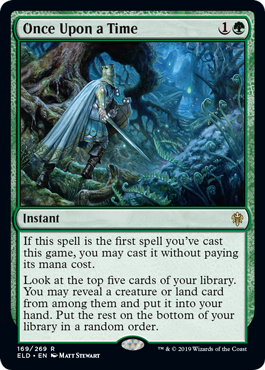
Once Upon a Time is expected to make a huge impact on Modern, and Jund Shadow is a good home for it. Once Upon a Time finds nearly everything a Shadow deck cares about, with Death Shadow and Tarmogoyf being the obvious hits. Once Upon a Time can also dig for Street Wraith or fetchlands to help enable these threats. Traverse the Ulvenwald can find “silver bullet” creatures, but Once Upon a Time finds those cards and helps enable Delirium. I’ll start testing this card as a split with Manamorphose.
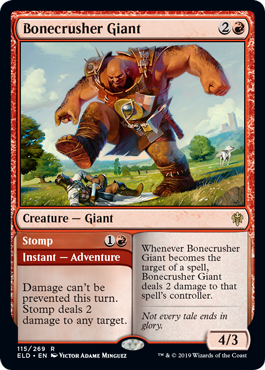
Bonecrusher Giant and other adventure creatures have more utility in Jund Shadow than they do in most other Modern decks. Being able to tutor for a creature that has a spell attached is powerful. I’m going to start by slotting Bonecrusher Giant in for Tarfire to see if the Shock attached to a reasonably costed body is worth it.
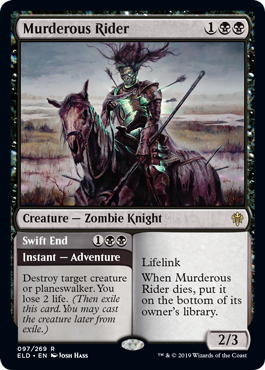
Previous versions of Jund Shadow included Shriekmaw as a removal spell you could tutor for, but Murderous Rider just does it better. I’m interested in being able to tutor for Hero’s Downfall that also costs two life, and having the option to cast the Rider itself is always nice. Whether Murderous Rider makes the cut for that starting 60 or is relegated to the sideboard depends on how many Planeswalkers are in the metagame, but it certainly solves Liliana of the Veil, as well as Teferi, Time Raveler, which are historically problematic for Death’s Shadow.
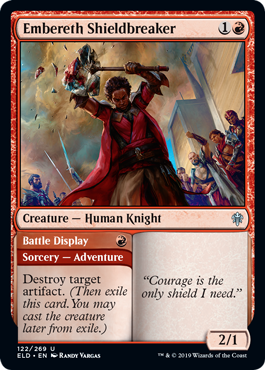
Embereth Shieldbreaker seems innocuous, but this is the adventure card I’m most interested in trying. A clean upgrade over Tin Street Hooligan, Shieldbreaker has a solid sideboard home. While the creature isn’t as efficient, the one-mana cost on Battle Display is huge. Being able to Traverse for a one-mana Shatter opens up opportunities to cast two spells the turn you kill an artifact.
Going forward, the Jund Shadow list I will be testing is:

2 Blood Crypt
4 Bloodstained Mire
1 Forest
4 Nurturing Peatland
1 Overgrown Tomb
1 Stomping Ground
1 Swamp
4 Verdant Catacombs
4 Mishra’s Bauble
4 Death’s Shadow
4 Fatal Push
4 Inquisition of Kozilek
4 Thoughtseize
4 Traverse the Ulvenwald
1 Bonecrusher Giant//Stomp
2 Temur Battle Rage
4 Tarmogoyf
1 Assassin’s Trophy
2 Manamorphose
2 Once Upon a Time
1 Murderous Rider//Swift End
1 Kolaghan’s Command
4 Street Wraith
Sideboard:
4 Collective Brutality
1 Collector Ouphe
3 Alpine Moon
2 Plague Engineer
1 Tireless Tracker
1 Yixlid Jailer
1 Embereth Shieldbreaker//Battle Display
1 Kolaghan’s Command
1 Assassin’s Trophy
I’m always happy to discuss all things Death’s Shadow, so if you have any questions or comments about anything here, reach out to me on Twitter (@RappaciousOne) and let me know!

Michael Rapp is a Modern specialist who favors Thoughtseize decks. Magic sates his desire for competition and constant improvement.

